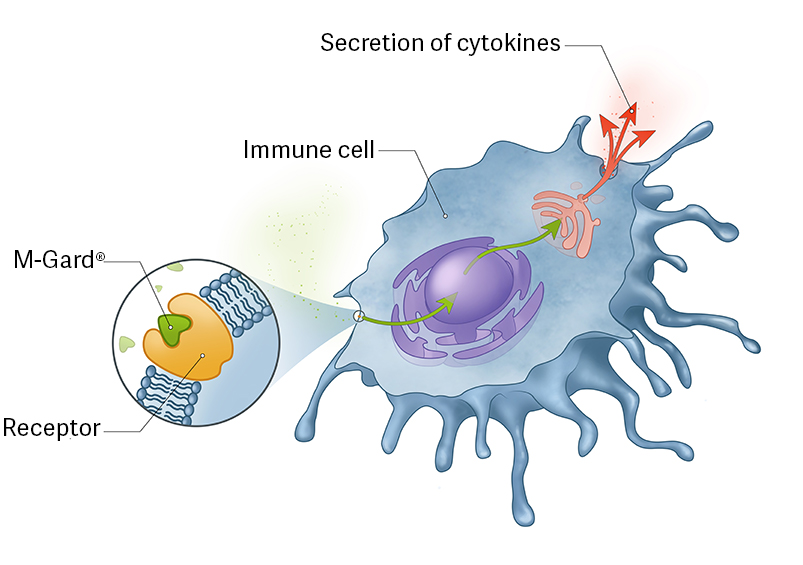The molecular structure and branching between the glucose molecules is essential for immune enhancing activity of beta-1,3/1,6-glucans, and this is what makes M-Gard® so potent compared to other types of glucan.
Biotec BetaGlucans has developed and patented processes for extracting the beta-1,3/1,6-glucan present in baker’s yeast without damaging the branching points or side chains, ensuring that the purified M-Gard® molecule retains its crucial bioactivity.

The common feature of glucans which have the ability to activate the immune system, is a chain of glucose molecules linked together in so-called beta-1,3-linkages. However, to exert high bioactivity there must also be “branches” of glucose molecules attached (by beta-1,6-linkage) to this beta-1,3-glucan chain. The branched beta-glucans, called beta-1,3/1,6-glucans are very potent immunomodulators.
Other glucans, such as beta-glucans from barley, oats and other grains have completely different chemical structure than M-Gard®. Such plant beta-glucans contain a large proportion of beta-1,4-linkages and they are not very effective with regard to immunomodulation.